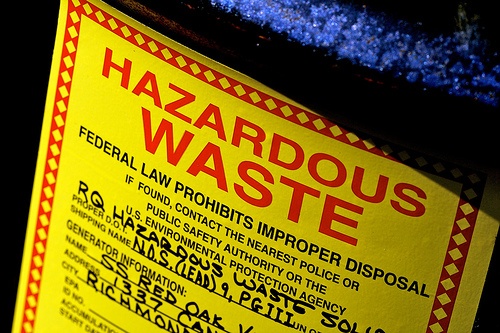On October 19, 2023, the US Environmental Protection Agency (EPA) proposed to establish requirements for the management of hydrofluorocarbons (HFCs) potentially released from equipment during maintenance or other services, and manage spent HFCs.. These rules support US efforts to implement the 2016 Kigali Amendment to the United Nations-sponsored Montreal Protocol on Substances that Deplete the Ozone Layer (which I wrote about HERE), and codified in the December 2020 coronavirus relief bill (American Innovation and Manufacturing Act of 2020 (AIM Act; which included dozens of unrelated provisions within its 5,593 pages). EPA adopted its over-arching HFC phase-down rules in September 2021 (I wrote about them HERE), and continues to adjust and refine their requirements. The remainder of this note summarizes EPA’s new proposal, which would impose requirements using authority under the Clean Air Act (CAA) and the Resource Conservation and Recovery Act (RCRA).
Read MoreAudit, Compliance and Risk Blog
EPA proposes management requirements for equipment containing HFCs
Posted by Jon Elliott on Mon, Nov 06, 2023
Tags: EPA, RCRA, Environment, HFCs, Environmental Policy, CCA, environmental protection, CFC
New EPA website compiles agency cancer prevention efforts
Posted by Jon Elliott on Mon, Oct 23, 2023
On September 13, the US Environmental Protection Agency (EPA) added to its website a portal with information about the agency’s many regulatory, research and informational efforts addressing carcinogen hazards and controls. This information supports the Biden Administration’s “Cancer Moonshot.” EPA undertakes carcinogen control efforts by applying legal authority under many of the environmental protection statutes it administers. The remainder of this note summarizes the agency efforts identified on EPA’s new web portal.
Read MoreTags: Health & Safety, EPA, CAA, tsca, CWA, NESHAPs, FIFRA, Healthcare, Illness, Cancer Moonshot
Several national laws empower the US Environmental Protection Agency (EPA) to set standards for the cleanup of contamination that resulted from accidental or deliberate releases of chemicals and other materials onto land or into water. EPA’s actions include direct requirements for cleanup by responsible parties, and also inform other parties’ evaluations of if and how to prepare contaminated areas for reuse – often referred to as “brownfields” since they’re assumed to be dirtier than never-used “greenfields.” The remainder of this note discusses EPA’s 73 page “Climate Smart Brownfields Manual,” issued by the agency in 2021
Read MoreTags: Health & Safety, EPA, chemical safety, Hazardous Waste, Environment
EPA and Corps of Engineers redefine “Waters of the United States” in response to Supreme Court
Posted by Jon Elliott on Tue, Sep 19, 2023
On September 8, 2023, the US Environmental Protection Agency (EPA) and US Army Corps of Engineers (Corps) adopted revised definitions of “waters of the United States” (WOTUS) which is a critical but undefined term in the Clean Water Act (CWA). As I’ve discussed repeatedly, the agencies, potentially regulated entities, and others have disputed possible definitions for decades. Most recently, in May 2023 the US Supreme Court adjusted its own precedent to over-rule definitions adopted by EPA and the Corps in January 2023 (I discussed the January rules HERE, and the Supreme Court decision (Sackett v. EPA) HERE). The rest of this note identifies the newest regulatory (re)definitions, adopted to conform the agencies’ regulations to the latest Supreme Court guidance restricting the types of wetlands potentially considered to be WOTUS subject to CWA regulation.
Read MoreTags: EPA, clean water, CWA, Clear water, water pollutants, environmental law, water, WOTUS
On August 17, the US Environmental Protection Agency (EPA) issued a memorandum announcing its National Enforcement and Compliance Initiatives and continuing enforcement priorities for the upcoming fiscal years 2024-2027 (NECI memo). This announcement specifies existing initiatives that EPA will extend, and additional new ones. The NECI memo explains that EPA selected its priorities based on the following three criteria:
- the need to address serious and widespread environmental issues and significant violations impacting human health and the environment, particularly in overburdened and vulnerable communities
- a focus on areas where federal enforcement authorities, resources, and/or expertise are needed to hold polluters accountable and promote a level playing field
- alignment with EPA’s Strategic Plan.
The remainder of this note summarizes the enforcement priorities expressed in the NECI memo.
Read MoreTags: Environmental, EPA, Environmental Policy, NECI
EPA proposes non-detect lead contamination standards after residential abatement
Posted by Jon Elliott on Tue, Aug 29, 2023
Lead and lead-containing materials are among the longest-used materials in construction and industry. Lead has been used in commercial, residential, and ceramic paint; in electric batteries and other devices; as a gasoline additive; for weighting; and other purposes. It also has been recognized as toxic to human health and the environment at least since the Romans, although understanding of the extent and severity of lead hazards has improved greatly in recent decades. Accordingly, environmental, occupational and public health agencies have progressively tightened standards to reduce lead exposures. On August 1, 2023, the Environmental Protection Agency (EPA) proposed to tighten post-remediation clearance levels as low as “non-detect.” The rest of this note discusses EPA’s latest proposal, and provides some context and background.
Read MoreTags: EHS, EPA, tsca, Hazardous Waste, ESG
EPA to reconsider management of containers that held hazardous waste
Posted by Jon Elliott on Tue, Aug 22, 2023
The Environmental Protection Agency (EPA) applies its authority under the Resource Conservation and Recovery Act (RCRA) to set national requirements for containers – such as drums – that may be contaminated after use to accumulate hazardous chemicals and wastes. These rules include the “empty container rule” first promulgated in 1980. On August 11, 2023 EPA published in the Federal Register a “Used Drum Management and Reconditioning Advance Notice of Proposed Rulemaking” (ANPRM), setting forth the agency’s thinking about existing container management requirements and possible enhancements and regulatory and non-regulatory alternatives to its existing approaches. The rest of this note summarizes EPA’s ruminations, which may lead to a formal rulemaking.
Read MoreTags: EPA, RCRA, Hazardous Waste
EPA adds Diisononyl Phthalate Category to Toxics Release Inventory chemical list
Posted by Jon Elliott on Mon, Jul 24, 2023
Effective September 12, 2023, the US Environmental Protection Agency (EPA) has added a new chemical category to its Toxic Release Inventory (TRI) program - Diisononyl Phthalates (DINP). EPA administers TRI as one of the distinct [programs created by the Emergency Planning and Community Right-To-Know Act of 1986 (EPCRA, also referred to as SARA Title III). This is the latest step in EPA’s review and updating of TRI, underway since President Biden assumed office. (I’ve discussed TRI several times, most recently HERE). The rest of this note discusses this latest change, which will require TRI reporting by subject facilities beginning with 2024 data.
EPA clarifies management requirements for waste lithium-ion batteries
Posted by Jon Elliott on Tue, Jul 18, 2023
On May 24, 2023, the Environmental Protection Agency (EPA) released a memo (“Lithium Battery Recycling Regulatory Status and Frequently Asked Questions”) clarifying regulatory requirements for spent lithium-ion batteries, under the Resource Conservation and Recovery Act (RCRA). EPA’s memo acknowledges that lithium-ion batteries power our electronics, lawnmowers, e-scooters, electric bicycles, and rapidly increasing numbers of electric cars, so numbers of spent batteries are also growing rapidly. In this memo, EPA evaluates RCRA’s applicability to lithium-ion batteries, particularly:
- Universal waste handling provisions
- Hazardous waste recycling provisions
- Other RCRA requirements
Based on its analysis, EPA offers clarification that most waste lithium-ion batteries are “likely” hazardous waste, which can be managed under universal waste handling standards until they reach a destination facility for recycling or discard. The rest of this note summarizes information in EPA’s memo.
Read MoreTags: EPA, RCRA, Hazardous Waste
EPA proposes to update and expand mandatory greenhouse gas emission reporting requirements
Posted by Jon Elliott on Fri, Jul 14, 2023
For over a decade, the US Environmental Protection Agency (EPA) has required thousands of facilities and organizations to report annual emissions of greenhouse gases (GHGs), in what it refers to as its Greenhouse Gas Reporting Program (GHGRP) (40 CFR part 98). On May 22, 2023, EPA published an extensive set of proposals to update and expand existing requirements. These proposals supplement and supersede proposals published in June 2022 but not acted on by the agency. The remainder of this note summarizes these proposals, focusing not on the many technical revisions to existing requirements but on proposals to target additional activities with reporting requirements. (I’ve written about EPA’s mandatory GHG reporting program several times, including HERE).
Read MoreTags: Environmental, EPA, Greenhouse Gas, Environment










